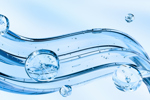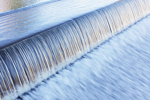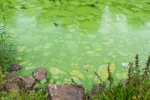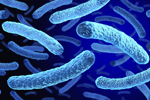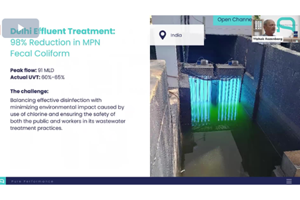SOURCE WATER CONTAMINATION RESOURCES
-
PFAS In Pregnant Women's Drinking Water Puts Their Babies At Higher Risk, Study Finds
When pregnant women drink water that comes from wells downstream of sites contaminated with PFAS, known as “forever chemicals,” the risks to their babies’ health substantially increase, a new study found. These risks include the chance of low birth weight, preterm birth, and infant mortality.
-
PFAS Settlements: Debunking The Myths And Revealing What's Really At Stake For Water Utilities Misinformation and confusion could prevent some utilities from benefitting from the aqueous film-forming foam multidistrict litigation (AFFF MDL) settlements. Here are five common myths about the AFFF MDL PFAS settlements and how public water systems can make the most of this unprecedented funding opportunity.
-
When Chemistry Meets Water Innovation
Nobel-winning molecular materials are poised to reinvent purification, desalination, and reuse.
-
Solving The World's Microplastics Problem: 4 Solutions Cities And States Are Trying After Global Treaty Talks Collapsed
Microplastics seem to be everywhere — in the air we breathe, the water we drink, the food we eat. Countries have tried for the past few years to write a global plastics treaty that might reduce human exposure, but the latest negotiations collapsed in August 2025. While U.S. and global solutions seem far off, policies to limit harm from microplastics are gaining traction at the state and local levels.
-
AEC System Proven Effective For Chloride Removal
In two bench-scale tests, a new technology effectively removed up to 99% of chlorides and 97% of total dissolved solids in a single pass. This solution offers a commercially viable alternative to traditional treatment methods.
-
Common Misconceptions Are Keeping Lakes "Sick"
Long-held misconceptions about lake management fuel the intensity and recurrence of harmful algal blooms.
-
Colorado's Subalpine Wetlands May Be Producing A Toxic Form Of Mercury — That's A Concern For Downstream Water Supplies
The wetlands found across the Rocky Mountains of Colorado just below tree line are crucial for regulating the supply of clean water from the highlands to metropolitan regions downslope, including Denver. However, new research shows the wetlands also harbor a health risk.
-
Grand Canyon's Dragon Bravo Megafire Shows The Growing Wildfire Threat To Water Systems
As wildfire crews battled the Dragon Bravo Fire on the Grand Canyon’s North Rim in July 2025, the air turned toxic. A chlorine gas leak had erupted from the park’s water treatment facility as the building burned, forcing firefighters to pull back. The water treatment facility is part of a system that draws water from a fragile spring. The fire also damaged some of the area’s water pipes and equipment.
-
What Are Legionella Log Books And Why Are They Important? Implementing and managing a Legionella control regime can sometimes seem daunting and complex. Invariably, a lot of resources, time, and effort are needed to achieve the required standard and provide assurance to senior management and auditors that controls are effective and those that are not are being managed and rectified appropriately.
-
How ABB's Flow And Digital Technologies Help Bawat With Smarter Ballast Water Compliance
The International Maritime Organization (IMO) sets strict global standards for ballast water management to prevent the spread of harmful aquatic organisms. For companies like Bawat, a Danish innovator in ballast water management, being able to verify ballast water flow measurements quickly, accurately, and from anywhere in the world is essential.



